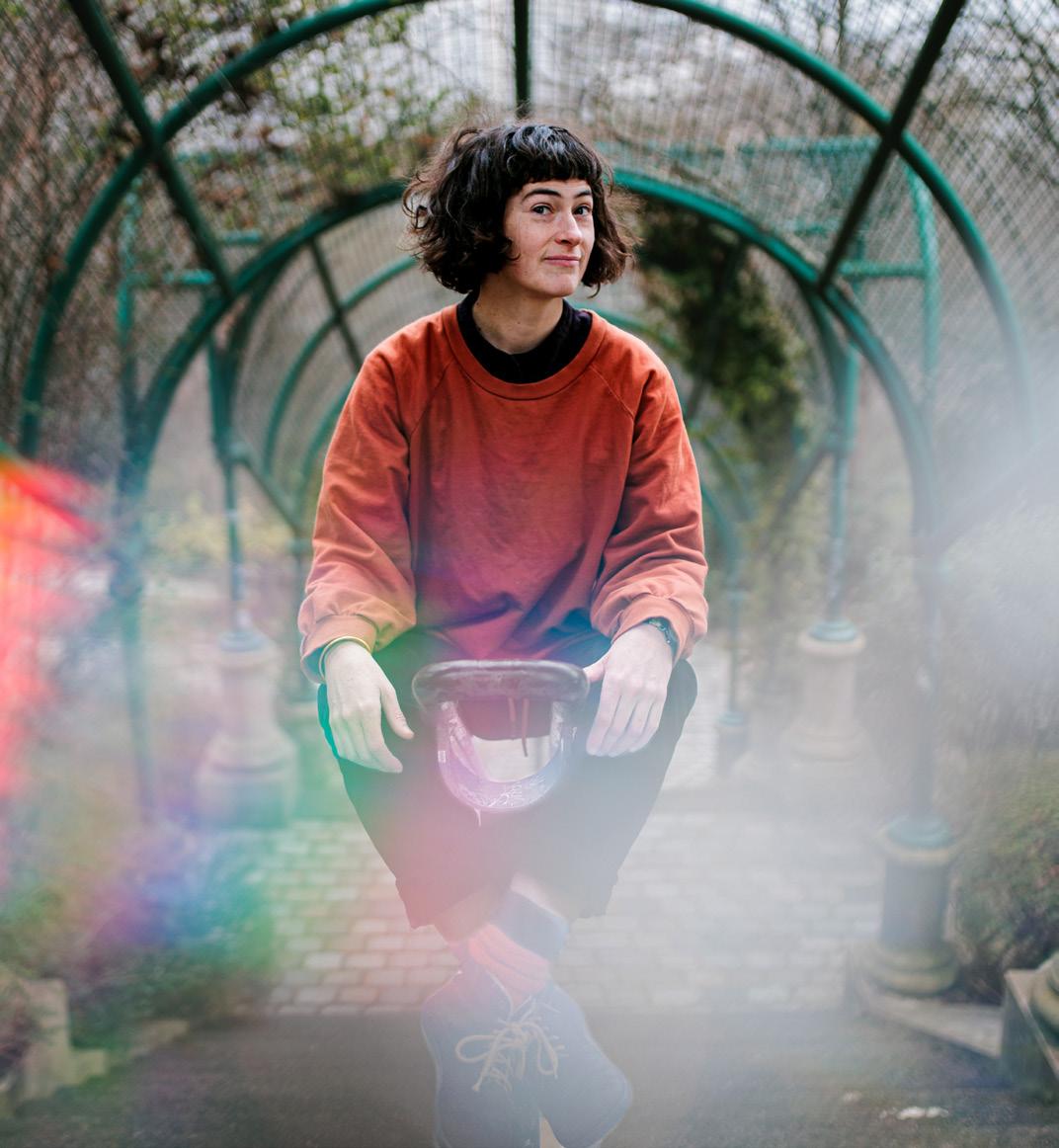Final Third
My Place: Shirley Collins
The folk legend shows us around her home in East Sussex, sharing her paintings, awards and presents from Stewart Lee, by Stuart Stubbs
As I approach the terraced cottage of folk legend Shirley Collins, the front door is ajar. This is a road where children can still play in the street, she later tells me, as we look out of her front window at the valley view. She has lived here for eight years, in the centre of Lewes, although the whole of East Sussex is Collins country, from her hometown of Hastings, where, in 1950, she wrote to the BBC to inform them that she was going to become a folk singer, to the furthest point west, Brighton, where she became the patron of Morris dancing group Brighton Morris 20 years ago. “I’m very proud of that,” she tells me soon after I arrive. “I love all things Morris-y.” She pauses and then laughs. “That’s Morris-y, not Morrissey.” Collins is now 87; a traditional folk purist and lifelong expert who’s made it her business to unearth and share countless traditional songs through her recordings and performances. Perhaps we should expect nothing less from a key voice of the English folk revival of the 1960s and 1970s, who was awarded an MBE in 2007 for services to music, but Collins’ love and respect for her field and craft can easily feel unparalleled. Never mind her 38-year blip where, following the breakdown of her second marriage in 1978, she quite simply lost the ability to sing, for nearly four decades, her music career cruelly snubbed out at the age of 43, replaced by a love for hiking.
78
Since her return to music in 2016 (she’s not sure how or why her singing voice came back – she just got sick of saying no to offers of shows), she has released two more albums, with a third set for release this month. “It’s my final one,” she tells me, sat beneath the painting she commissioned for the record’s cover art. “Three of three with Domino [Records] – it’s been wonderful, and an honour.” The album is called Archangel Hill, and, typical of a Shirley Collins record, is once again beautiful, warm, occasionally heart-breaking, and overflowing with history, made up of songs from traditional sources and favourite writers of Collins’ – a collection of miniature epics about soldiers, sailors, farmers’ wives and tornadoes. And there’s a highlight, too, in a live recording from 1980, of Collins performing ‘Hand and Heart’ at Sydney Opera House, featuring an arrangement written by her sister and musical partner Dolly. “Dolly’s son was very young then, and she didn’t want to come,” she remembers, “but I had her there in spirit because I had her arrangements. It’s my favourite song in a way because the words were also written by my uncle Fred. It’s quite important to have stuff that really means something that you can leave behind.” For the afternoon, Collins shares with me some of her most treasured possessions and the stories behind them, as welcoming, warm and modest as her
music has always been, but funnier and much younger-seeming in person too. 01 WILLIAM BLAKE ART I have two pieces of William Blake art, given to me by my darling Stewart Lee. Love him! He’s such a lovely chap, and I’ve met his wife now, Bridget Christie – she’s wonderful too. I first met Stewart a few years ago. My daughter went to St Edmund Hall [Oxford University] and Stewart did at the same time. They decided to have a folk club and asked me to go up and say “I open this folk club”. Polly came with me and Stewart Lee was there as well, so I met him there for the first time. He sang a song called ‘Polly On The Shore’, which came from a Sussex singer, George Maynard. On the whole I don’t like how people treat English folk song, because they don’t understand it – this is not vanity really, because I’m of that generation who can appreciate how it used to be sung – and he sung ‘Polly On The Shore’ in the interval, because he wasn’t sure if he had the nerve to do it in front of the audience. So he was backstage, and it just made me shiver. It was so intense, just in how he got the absolute essence of it. I almost fell in love with him on the spot because he’d done it so well. It was the start of a beautiful friendship. Eventually I met Bridget, and – sorry, this all sounds so vain – she
photography by phil sharp



































